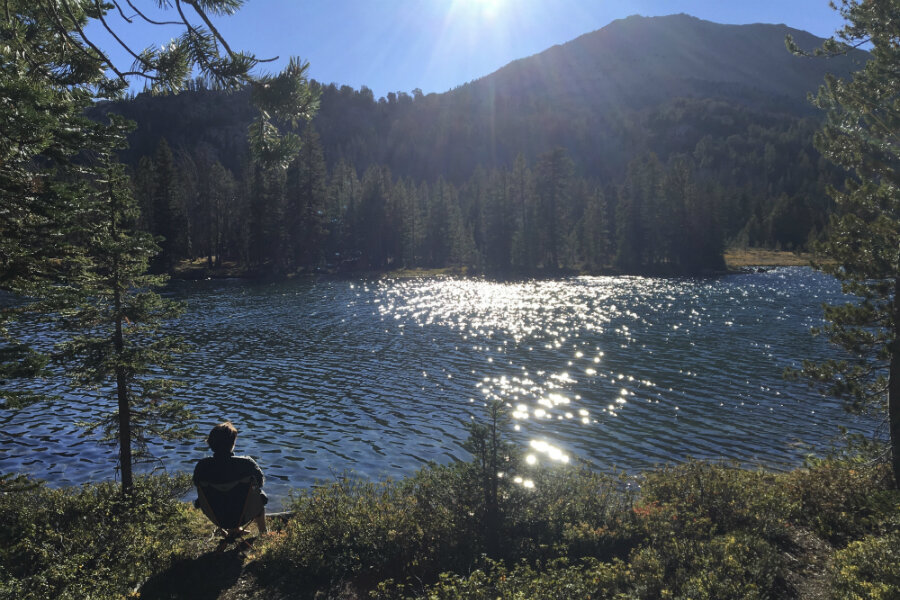Extreme weather aside, what will climate change do to nice, mild days?
Loading...
Climate scientist Sarah Kapnick said her friends kept asking her for help selecting a wedding date in hopes of finding fair weather. That experience, despite her inability to make such precise forecasts months or more in advance, inspired Dr. Kapnick to take part in a first-of-its-kind study to reframe broad climate change findings with more relatable terms.
Instead of highlighting an anticipated increase in extreme weather events, such as hurricanes, droughts, floods, and blizzards, she worked with a research team to focus on the impact climate change will have on "pleasant" weather days. Their study, published online Wednesday by the journal Nature Climate Change, used high-resolution computer modeling to predict that Earth will see an average decrease of four fair-weather days per year by 2035 and an average decrease of 10 such days by the end of the century – creating fewer opportunities for enjoyable outdoor nuptials.
The researchers defined mild weather as between 64 and 86 degrees Fahrenheit with low humidity and little to no rain.
"It's the type of weather where you can go outside and do something fun," the study's lead author, Karin van der Wiel, a meteorology researcher at Princeton University and the National Oceanic and Atmospheric Administration (NOAA), told the Associated Press. "It's not too cold. It's not too hot. It's not too humid."
These Goldilocks-approved weather conditions have occurred an average of 74 days per year globally during the past three decades – a figure that is expected to drop to 64 during the final two decades of the century. But localized changes will vary widely based on season and region, the study found. In the United States, for instance, summer will likely lose nine mild days by the century's end, but it could regain nearly as many mild days in the winter, spring, and fall. Other parts of the world, however, face extreme losses in "pleasant" weather.
"The changes are more dramatic in parts of the developing world, where you have high concentrations of populations," said Kapnick, who coauthored the study with Dr. van der Wiel and NOAA's Gabriel Vecchi. The team relied on middle-of-the-road projections for global warming and ran computer simulations without dramatic reductions in carbon emissions.
They found that tropical regions and most of Africa, eastern South America, South Asia, and northern Australia are projected to see the most pronounced loss in mild weather. Rio de Janeiro, for instance, is expected to lose an average of 40 mild days, while Seattle and cities in northern Europe could see an increase in mild weather days. Since shifts in good weather can impact a wide array of business activity, including tourism and construction, this uneven impact of climate change could bring uneven economic changes as well.
In a separate study, Kapnick joined with economist Derek Lemoine to study the socioeconomic impacts of the latest projections. They found that future warming trends could "raise the expected rate of economic growth in richer countries, reduce the expected rate of economic growth in poorer countries, and increase the variability of growth by increasing the climate's variability," suggesting that climate scientists need to shift their focus.
In their study, Kapnick, van der Wiel, and Dr. Vecchi wrote that their findings use data that is "highly relatable to the public" to describe the near-term impact of climate change.
"The presented information may therefore be used to communicate climate variability and climate change impacts to a broad audience," they wrote.
Even so, some fellow scientists have questioned the purpose behind the study's focus on mild weather.
"It is in the extremes when things break and damage occurs," Chris Field, a Stanford University climate scientist who led an international study of extreme weather, told the Associated Press.
Gerald Meehl, a scientist with the National Center for Atmospheric Research who also studies extreme weather, noted that, although a decrease in mild weather may not cause as much economic hardship as extreme weather, there are other factors worth considering, including tourism "or simple human enjoyment."
This report includes material from the Associated Press.






